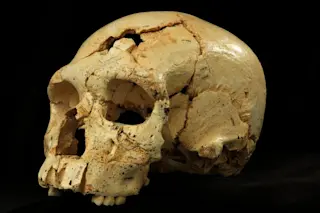Known as Skull 17, this fossil find from Spain's Sima de los Huesos represents one of the most complete craniums of an early hominid ever found, and is just one of the site's landmark finds. Photo credit: Javier Trueba/Madrid Scientific Films It was a world not of a single population unified into one kingdom, but a violent, chaotic continent divided into houses, each representing a different family. Some of the houses were isolated; others competed for the same territory, sometimes mingling, sometimes warring. As glaciers advanced from the north, the houses were faced with a prospect familiar to fans of the popular HBO fantasy series Game of Thrones: you win or you die. "Because winter," said Dr. Juan-Luis Arsuaga, "was coming." Discussing the analysis of 17 early hominid skulls, published today in Science, Arsuaga, the study's lead author, said the new research suggested a much different evolutionary path for the ...
Early Hominid Evolution Was "Game of Thrones"
Discover the secrets of early hominid fossils from Sima de los Huesos, shedding light on Neanderthal evolution's roots.
More on Discover
Stay Curious
SubscribeTo The Magazine
Save up to 40% off the cover price when you subscribe to Discover magazine.
Subscribe













